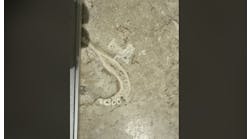While there is a broad selection of tips for magnetostrictive units, I find that the selection of tips for piezo units is much wider. These tips are designed for various dental disciplines, and they can help you to accomplish many things.
Here are three uses for ultrasonics in your treatment operatory:
No. 1: Agitating endodontic irrigants
Several studies have shown that ultrasonic activation of endodontic irrigants yields a canal space that is much cleaner with less debris. 30 to 60 seconds with a piezoelectric ultrasonic can yield a dramatic improvement in debris removal.
No. 2: Removing decay
With diamond-coated tips, ultrasonics can remove decay conservatively with minimal collateral damage to soft tissue, making them perfect for cervical caries situations. NSK Dental offers spherical, diamond-coated piezo tips that can remove decay with minimal gingival bleeding. Using tips like these can make tough restorations easier.
No. 3: Removing crowns
Vibration is hugely beneficial for the removal of old restorations, and your hands could never produce the amount of vibration that an ultrasonic tip can. Use the vibrating capabilities of an ultrasonic to break up the crown-cement interface, which can help you to retrieve an old crown without having to cut it in half.
These are just three examples of how an ultrasonic unit can help you in your treatment operatory, but there are many more. I frequently use my ultrasonics for plaque and calculus removal during restorative appointments. Sometimes, I find a small, subgingival calculus deposit while prepping a finish line for a crown. Other times, I need to debride some plaque for a direct restoration that involves the cervical margin of a tooth. In situations like these (and many others), having an ultrasonic works to my benefit. I think it is worth your time to consider adding an ultrasonic unit to your treatment operatories. You might be amazed at how often it gets used once you have it.
Editor's Note: This article first appeared in Pearls for Your Practice: The Product Navigator.Do you have a question for Dr. Austin? Is there a product you'd like to see him review? Or would you like to submit your own products article or "Pearl"? Tweet to @pearlmailor send an email to [email protected].






